Needle-punched batting is crucial in quilting, offering a sturdy and versatile material for crafting beautiful and durable quilts.
This specialized quilt batting, created through a mechanical process of interlocking fibers with tiny needles, provides a foundation between the quilt top and the backing fabric.
Renowned for its stability, durability, and ease of use, needle-punched batting offers myriad benefits, from its resistance to tearing and shifting to its suitability for various quilting techniques.
Understanding the characteristics and advantages of needle-punched batting is essential for quilters seeking to create high-quality quilts with a professional finish.
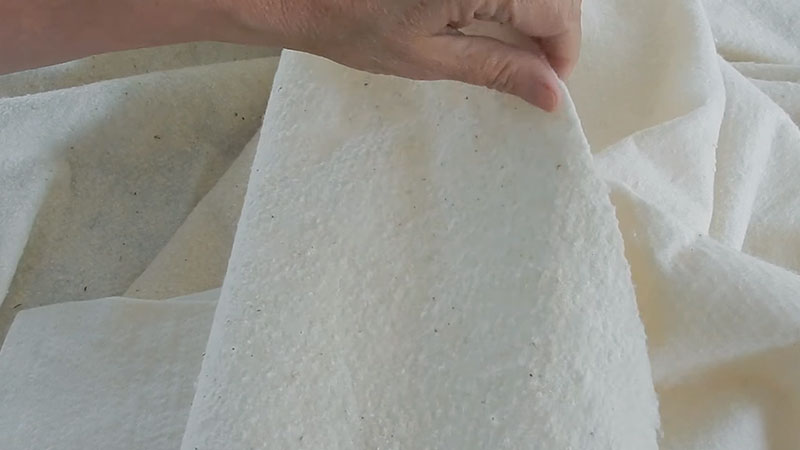
What Is Needle-Punched Batting?
Needle-punched batting is quilt batting made by mechanically intertwining fibers with tiny needles. This process creates a dense, stable material used between quilt layers. Needle punching binds fibers without adhesives, ensuring uniform texture and thickness.
It is available in cotton, polyester, or blends and offers various characteristics like warmth and loft. Its durability makes it suitable for machine or hand quilting techniques.
Compatible with diverse fabrics and threads, needle-punched batting enhances quilt appearance and longevity. It provides structure, support, and smooth stitching, making it a popular choice for quilting projects.
How Is Needle-Punched Batting Made? Unveiling the Manufacturing Process
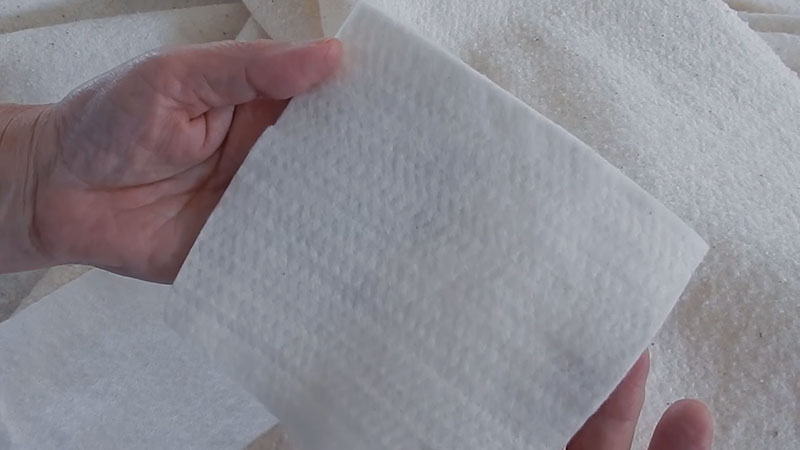
Needle-punched batting is a type of quilt batting crafted through a specialized mechanical process designed to create a dense and uniform material suitable for quilting projects.
Here’s a detailed overview of how needle-punched batting is made:
Fiber Selection
The process begins with selecting natural materials like cotton, wool, or bamboo, synthetic fibers like polyester, or blends of different fibers. The choice of fibers depends on factors such as desired loft, warmth, and durability.
Opening and Blending
The selected fibers are opened and blended to create a uniform mixture. This ensures that the batting has consistent properties throughout and helps to improve its overall quality.
Carding
The blended fibers are carded, passing them through carding machines with fine wire teeth. This process aligns the fibers uniformly and removes any impurities or tangles.
Laying
After carding, the fibers are laid out in thin, even layers to form a batt. The batt’s thickness can vary depending on the desired loft and density of the final product.
Needle Punching
The batt is then fed through a needle-punching machine equipped with thousands of tiny needles.
As the batt passes through the machine, the needles repeatedly punch through the layers of fibers, intertwining and compacting them together.
This process binds the fibers without additional adhesives or chemicals, creating a stable and durable batting material.
Trimming and Finishing
Once the needle punching process is complete, the batting may be trimmed to size and undergo additional finishing processes as needed. This can include heat-setting to stabilize the fibers or adding a scrim layer for extra strength and stability.
Quality Control
The batting undergoes rigorous quality control checks throughout manufacturing to ensure it meets the desired loft, density, and uniformity specifications.
This helps ensure the final product is high quality and suitable for quilting and other textile applications.
What Is Needle Punched Batting Used For? Exploring Its Versatile Applications
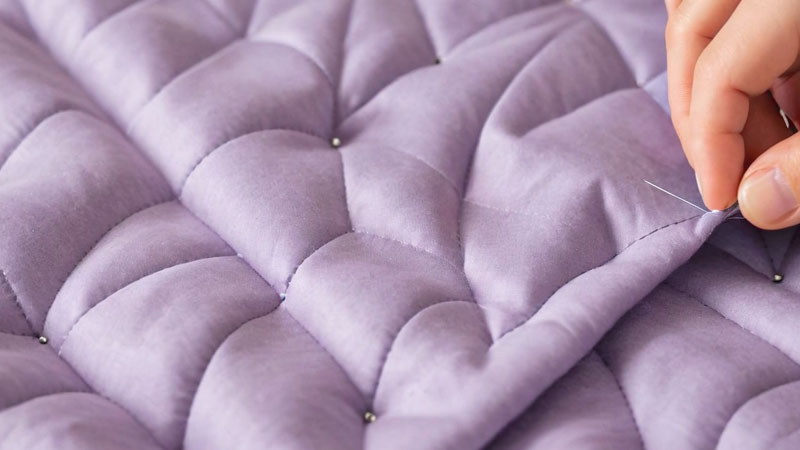
Needle-punched batting is primarily used as an essential component in quilting projects. It is the middle layer, sandwiched between the quilt top and backing fabric, providing warmth, structure, and a smooth surface for stitching.
Here are some common uses of needle-punched batting:
Quilting
Needle-punched batting is the preferred choice for quilting enthusiasts for its stability, durability, and ease of use. It can be used in various techniques, including machine, hand, and tied quilting.
Apparel and Home Décor
While primarily used in quilting, needle-punched batting can also be utilized in other sewing projects such as garments, bags, and home décor items like table runners, placemats, and wall hangings.
Crafts and DIY Projects
Due to its versatility and ease of manipulation, needle-punched batting is often incorporated into various craft projects such as fabric sculptures, stuffed animals, and holiday decorations.
Cushions and Pillows
Needle-punched batting can add loft and softness to cushions and pillows, providing comfort and support for seating and bedding applications.
Insulation
In addition to its use in sewing and crafting, needle-punched batting can also serve as insulation in DIY projects, such as lining oven mitts, pot holders, or other heat-resistant items.
7 Advantages of Using Needle-Punched Batting
Needle-punched batting, a type of quilt batting, offers several advantages for quilting and other crafts. Here are some of the key benefits:
1. Stability and Durability
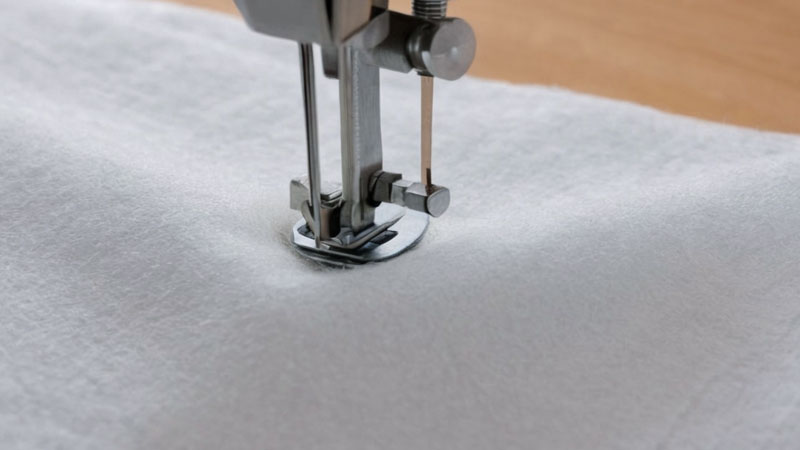
Needle-punched batting undergoes a mechanical process that intertwines fibers, creating a stable and durable material. This ensures the quilt maintains its shape and structure over time, even with frequent use and washing.
2. Low Loft
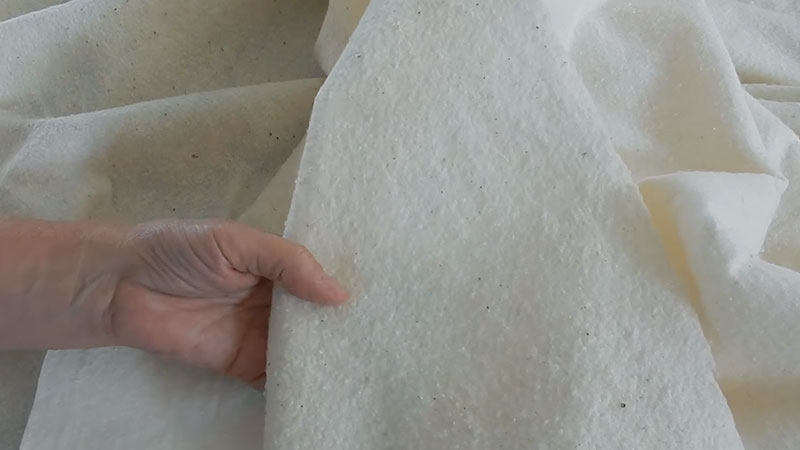
Needle-punched batting typically has a low loft, meaning it is thin and flat. This results in a smooth and even surface for the quilt, making it ideal for achieving a sleek and professional finish.
3. Resistance to Shifting
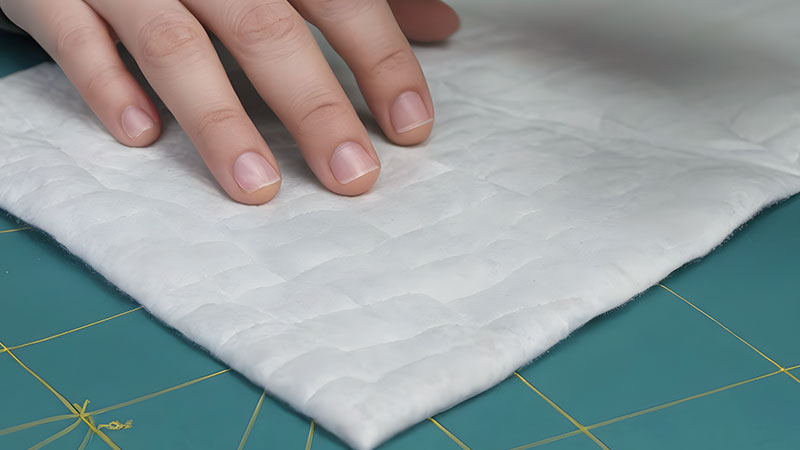
The dense construction of needle-punched batting makes it resistant to shifting and bunching, ensuring that the layers of the quilt remain securely in place during the quilting process.
4. Versatility
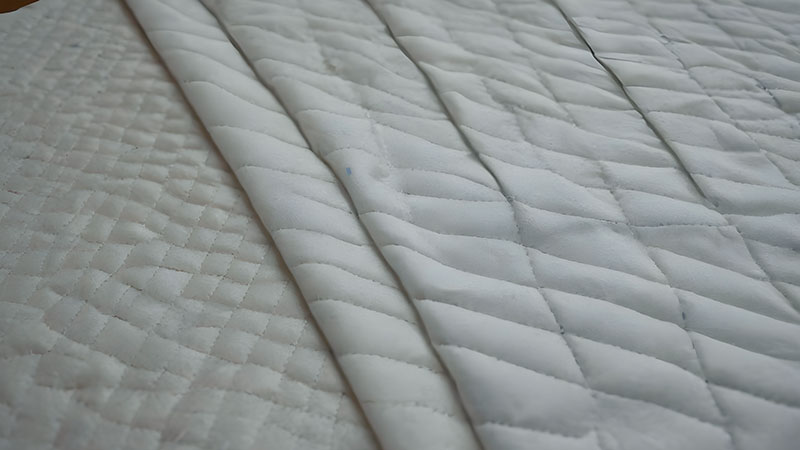
Needle-punched batting can be used with various quilting techniques, including machine quilting, hand quilting, and tying quilts. This versatility allows quilters to experiment with different styles and methods to achieve their desired results.
5. Ease of Use
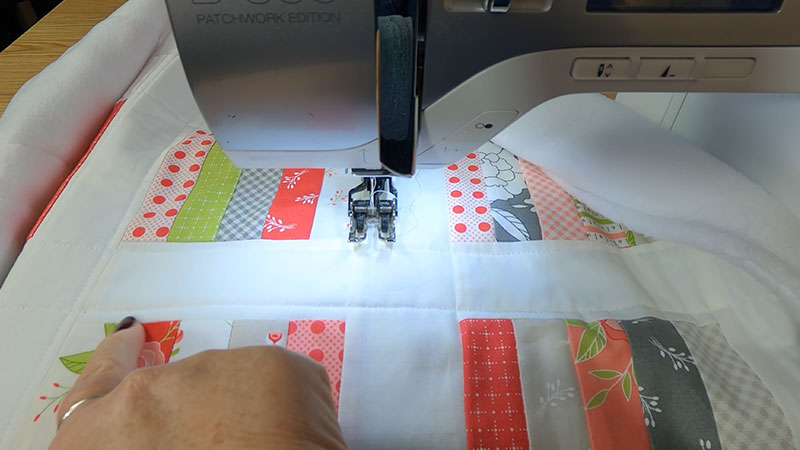
Needle-punched batting is easy due to its stable and uniform texture. It can be easily cut to size and does not require pre-washing or pre-shrinking, saving time and effort during quilting.
6. Compatibility with Fabrics
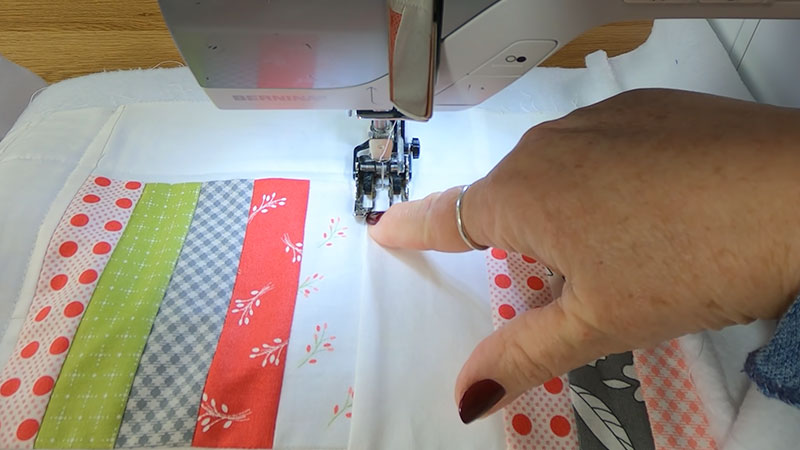
Needle-punched batting is compatible with various quilt fabrics, including cotton, polyester, and blends. This allows quilters to choose the fabric that best suits their project without worrying about compatibility issues with the batting.
7. Longevity
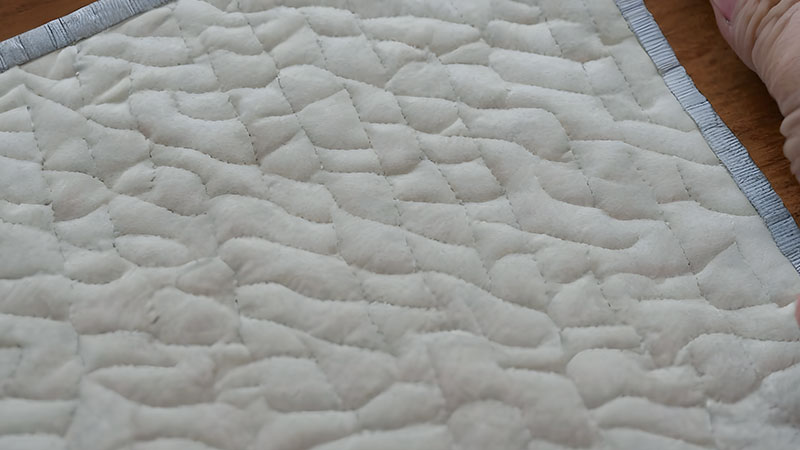
Quilts made with needle-punched batting are known for their longevity and durability. The dense fibers of the batting help to maintain the integrity of the quilt, ensuring that it remains in good condition for years to come.
7 Drawbacks to Using Needle-Punched Batting
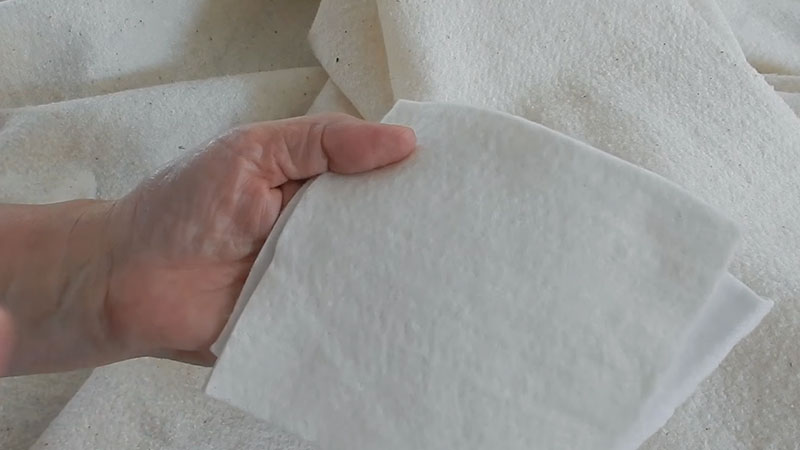
While needle-punched batting offers numerous benefits for quilting projects, there are also some potential drawbacks to consider:
1. Heavier and Stiffer Texture
Needle-punched batting tends to be heavier and stiffer than other types, particularly when compared to natural fiber battings like cotton.
This can result in less soft and flexible quilts, which may be less desirable for specific projects or preferences.
2. Less Drape
Due to its dense construction and lower loft, needle-punched batting has less drape than other batting types.
Quilts made with needle-punched batting may not conform as well to the body or furniture curves, leading to a less draped or fluid appearance.
3. Potential for Shrinkage
Some needle-punched battings may shrink more than other types of batting, mainly if they contain natural fibers like cotton.
This can affect the size and appearance of the quilt after washing, potentially causing distortion or puckering in the quilted fabric.
4. Requires More Quilting or Tying
Due to its dense nature, needle-punched batting may require more quilting or tying to prevent bunching or sagging, especially for larger quilts. This can increase the time and effort necessary for quilting and may limit design options for some projects.
5. Limited Loft Options
While needle-punched batting is available in various loft options, it may not offer the same range of loft choices as other types of batting, such as polyester or wool.
Quilters looking for a high loft or ultra-thin batting may find their options more limited with needle-punched batting.
6. Less Comfortable
The heavier and stiffer texture of needle-punched batting may make quilts less comfortable or cozy, particularly for bedding or garments where softness and flexibility are desired. Quilters seeking a softer, more cuddly feel may prefer alternative batting options.
7. Potential for Difficulty in Hand Quilting
While needle punched batting is suitable for both machine and hand quilting, some quilters may find it more challenging to hand quilt with due to its denser texture. Hand quilting through dense batting can require more effort and may result in uneven stitching.
How to Choose Needle-Punched Batting? Essential Tips and Considerations
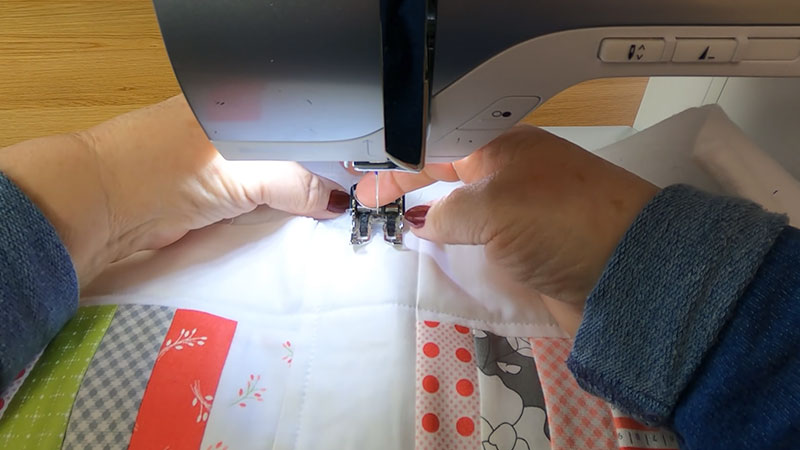
Choosing the right needle-punched batting for your quilting project involves several key considerations:
Quilt Size and Shape
Begin by measuring the dimensions of your quilt top. Ensure the batting is slightly larger than your quilt top to allow for trimming after quilting. Consider using pre-packaged rolls or piecing together multiple batting sections for larger quilts.
Weight and Warmth
Consider the intended use of your quilt and the climate it will be used in. Lighter weight battings are suitable for warmer climates, while heavier weight battings provide more warmth for colder regions.
Choose a batting weight that aligns with your preferences and the seasonality of your project.
Loft
Decide on the loft or thickness of the quilt you desire. Low loft battings create a flatter appearance, ideal for intricate designs, while high loft battings add dimension and texture. Select the loft that best complements your quilt design and aesthetic preferences.
Fiber Content
Choose the fiber content based on your preferences and project requirements. Cotton batting offers breathability and a traditional look, while polyester batting provides loft and resilience. Blended battings combine the benefits of both materials.
Consider texture, warmth, and ease of care when selecting the fiber content.
Quilting Technique
Consider the quilting technique you plan to use. Some battings may be better suited for specific techniques. Ensure the batting is compatible with your preferred method, whether machine quilting, hand quilting, or tying quilts.
Washing and Care Instructions
Review the manufacturer’s washing and care instructions for the batting. Some battings may require pre-washing to remove sizing or pre-shrinking.
Consider how frequently the quilt will be washed and choose a batting that can withstand repeated washing without compromising its integrity.
Sample Testing and Recommendations
Please obtain samples of different needle-punched battings to evaluate their texture, loft, and overall suitability for your project. Seek recommendations from experienced quilters, fabric store staff, or online quilting communities.
Testing samples and gathering recommendations can help you make an informed decision and ensure the batting meets your needs and preferences.
FAQs
Can Needle Punched Batting be used for hand quilting?
Yes, needle-punched batting can be used for hand quilting, but its dense structure may make it more challenging than other types of batting.
How do I care for quilts made with needle-punched batting?
Follow the manufacturer’s washing and care instructions provided with the batting. Some battings may require pre-washing or special care to maintain their integrity.
Can Needle Punched Batting be used for different types of quilts?
Yes, needle-punched batting can be used for various types of quilts, including bed quilts, wall hangings, and art quilts, depending on the project’s requirements.
Is Needle Punched Batting suitable for beginner quilters?
Yes, needle-punched batting is suitable for quilters of all skill levels. Its stability and ease of use make it a good choice for beginners and experienced quilters.
Are there eco-friendly options for needle-punched batting?
Some manufacturers offer needle punched batting made from recycled or sustainable materials, providing eco-friendly options for environmentally-conscious quilters.
To Recap
Needle-punched batting emerges as a cornerstone in quilting, offering a reliable and versatile solution for creating quilts of exceptional quality.
Through its unique mechanical process of intertwining fibers with precision, needle-punched batting provides stability, durability, and ease of use, making it a preferred choice among quilters of all skill levels.
From its resistance to tearing and shifting to its compatibility with various techniques, needle-punched batting exemplifies the craftsmanship and innovation inherent in the quilting community.
As quilters continue to explore new techniques and designs, the enduring appeal of needle-punched batting ensures its enduring presence as a staple in quilting projects for generations to come.
Leave a Reply